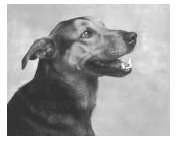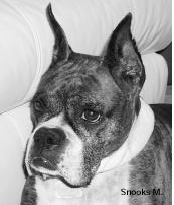Animal Case Studies
Re-printed from Allergy Research Group
Newsletter February 2004
See Additional Newsletter Articles on (Taurox SB™ 6X Enhanced) -
COBAT
Article Index
 (Taurox SB™ 6X Enhanced) -
COBAT: Animal Case Studies (Taurox SB™ 6X Enhanced) -
COBAT: Animal Case Studies
Clear Improvement in Quality of Life: Hints of Additional Benefits
by Janis Daniel Dees,
Veterinary Nutritional Consultant
“Overall I have found, based on blood analysis
by veterinarians and client responses, a remarkable improvement in quality of
life and life-extension.”
--Janis Daniel Dees, Veterinary
Nutritional Consultant
I first became aware of COBAT when I attended a
lecture given at the American Academy of Anti-Aging Medicine Conference by a
former researcher at NIH, in December of 2001. Some of the immunological
responses witnessed by researchers at the University of Maryland are
remarkable. COBAT’S antitumor, and therefore, life-extending potential
with respect to melanoma and myeloma progression in lab animals is fascinating
(Knight, et al., see Animal Model pg. 3). It is exciting to see promising
results regarding the regulation of immune system function and the effects it
has on TNF - all without potential toxic side effects! I was eventually
appointed Director of Companion Animal Studies for the use of COBAT for one and
a half years, actively participating in the studies. This included becoming
involved on a first-hand basis with observ i n g and documenting the overall
benefits and effects of the compound on animals with cancer. As a Veterinary
Nutritional Consultant for nearly 20 years, I have been utilizing nutritional
therapies for the support of animals in disease states, including various
stages of cancer. Our companion animals are experiencing the very same disease
states and treatments that humans do everywhere.
We are thus well equipped to judge the quality of life
changes in animals. The same chemotherapeutic drugs, radiation and surgery
techniques are used by veterinary professionals. The extreme fatigue, anorexia
and depression commonly experienced by animals with cancer can occur with or
without the use of chemotherapy or radiation. In the currently accepted
understanding, our animal companions don't have the thought process needed to
believe that they will feel better soon. The mystical workings of the animal
mind is not capable of experiencing a placebo effect at least no more than a
good tasting biscuit or favorite snack might provide.
Case Histories
The following case histories are examples of the
veterinary use of COBAT with animals who have fatigue in my personal
involvement:
 Case 1: Snooks M., a 9-year old
female Boxer was diagnosed with an aggressive mast cell tumor on her front left
shoulder in August of 1999. The growth was surgically removed with a poor
prognosis for any long-t e rm survival. Chemotherapy was decided against. In
September of that year I worked with Snooks, changing her diet to a raw food
diet with nutritional support as the sole method of strengthening her immune
system. Snooks appeared to thrive. The tumor would occasionally appear to have
a fever but would shrink afterwa rds. In the beginning, she had ups and downs,
but was mostly comfortable. Over time her energy increased long walks with her
Mom and a great appetite showed she was ready to stay here for at least a bit
longer. Snooks developed an additional tumor mass on her left rear leg,
otherwise she appeared relatively unaffected . Case 1: Snooks M., a 9-year old
female Boxer was diagnosed with an aggressive mast cell tumor on her front left
shoulder in August of 1999. The growth was surgically removed with a poor
prognosis for any long-t e rm survival. Chemotherapy was decided against. In
September of that year I worked with Snooks, changing her diet to a raw food
diet with nutritional support as the sole method of strengthening her immune
system. Snooks appeared to thrive. The tumor would occasionally appear to have
a fever but would shrink afterwa rds. In the beginning, she had ups and downs,
but was mostly comfortable. Over time her energy increased long walks with her
Mom and a great appetite showed she was ready to stay here for at least a bit
longer. Snooks developed an additional tumor mass on her left rear leg,
otherwise she appeared relatively unaffected .
At this stage COBAT was started. Her energy increased
and she appeared to have very little down time. She continued to feel well and
have a great life. Snooks was doing quite well for an 11 1/2 year old Boxer.
Later, COBAT was discontinued. Following discontinuation, there were noticeable
side effects: the gingival tissue around her teeth started growing
proliferatively, her stamina diminished, her walks became shorter, she became
quieter, and she started having central nervous system symptoms. The doctors
believed the cancer had metastasized to her brain. Also, the cancer had
noticeable spread to her spleen and her liver. As time passed, she lost her
battle with cancer. However, Snooks outlived her original prognosis over 2 1/2
years. I often wonder if the COBAT had been continued, what the out-come would
have been.
Case 2: In January of 2003, Jager M., a 10
1/2-yearold spayed female Newfoundland Hound was diagnosed with a malignant
melanoma on her left buccal mucosa, near her molars. By the time surgical
excision was performed, the mass was the size of a large lemon. Clean margins
were not obtainable due to the location of the mass because part of her jaw
would have had to been removed. She was put on two different antibiotics,
aspirin and a narcotic pain reliever as well as prednisone (contraindication
for COBAT). Her condition was weakening and her front left elbow was swollen as
well. She was in pain when she walked. Her appetite was diminished and she had
lost her lust for life. At times, her Dad would have to carry her home because
she just couldn't walk the return trip from the park where she had loved to
play in her younger years.
We then put her on a fresh food diet and supplements
to reduce inflammation, improve immunity and protect her GI tract. She also
initiated use of COBAT 6x. Gradually, she recuperated from the effects of
surgery. One month later she was able to resume walks with her Dad and her
stamina increased. Her appetite continued to improve. According to her Dad,
Jager starting acting much younger outwalking her companion dog and enjoying
her playtime at the park. Over the next several months she continued using
COBAT in conjunction with her supplements. Her quality of life had improved to
the degree where the years had fallen away f rom her. Sometime during the month
of September she discontinued the COBAT and continued on a limited version of
her supplement program. Jager continued to enjoy good quality of life until
late November of 2003, when her kidneys stopped functioning and we lost her.
She had long outlived the original prognosis - the oral lesion never returned
and her lungs never appeared to be affected. I can only conclude that COBAT had
some effects on preventing what we would typically expect to be the next
metastasis site, as well as helping to keep her quality of life high.
Case 3: Rahula, a 15-year old neutered male
Siamese, developed a loss of attitude, appetite and had marked abdominal
enlargement in mid September of 2001. He was examined and a blood chemistry
profile was run. The abnormal values showed elevated AST and Total Protein, and
no measurable GGT, or Alkaline Phosphatase. Elevated Total and Direct Bilirubin
were also noted. The initial diagnosis was Intracellular Hepatic disease.
The medications prescribed, were Pepcid AC, Lactulose
and Amoxicillin. His condition did not noticeably improve. He was lethargic and
anorexic. A second opinion was obtained mid October and an orange sized growth
was palpable on his liver. The diagnosis was changed to Liver Cancer. The drugs
were discontinued and he was put on a fresh food diet with concurrent
nutritional supplementation to support immune system function and liver
detoxification. He was expected to survive three to four months.
Albumin, Total Protein, Globulin and Bilirubin
normalized, as did AST, however, Alkaline Phosphatase and GGT did not. His
attitude and appetite slowly i m p roved, as did his interest in returning to
his normal daily activities. His abdomen however, remained distended and the
growth on his liver unchanged when examined in late March 2002. At this time,
he was started on COBAT. His Alkaline Phosphatase and GGT normalized. The other
values continue to show stability.
Rahula continues to show improvement in the quality of
his life; he is alert; his appetite is good, his weight stable and he is
enjoying his normal daily activities. On July 5th, Rahula celebrated his 17th
birthday and as of mid September, 2003, COBAT was discontinued and he was
considered to be in remission.
Janis Daniel Dees has been a
consultant specializing in the field of Veterinary Nutrition for almost 20
years. Working to enhance quality of life by utilizing methods correcting
metabolic imbalances and deficiencies. In addition to writing articles for
national publications, chairing lectures and conducting workshops, she is
currently writing a book on animal nutrition and healing.
Phone:
661-266-9320
email: Janis@JanisCares.com
website:
www.JanisCares.com
Focus on Allergy Research Group ®
Editor-in-Chief: Stephen A. Levine, Ph.D.
Managing Editor: Elise Zurlo, CNC
Medical Editor: Jeffry L. Anderson, M.D.
Assistant Copy Editors: Diane Raile, CNC &
Luba Voloshko, Ph.D.
FOCUS is published to provide scientific
information to healthcare practitioners and physicians. Certain persons
considered to be experts may disagree with one or more of the foregoing
statements concerning relationships of various nutritional factors to
structures and functions of the body, or various nutritional situations
adjunctive to certain bodily conditions. The same are deemed, nevertheless, to
be based on sound and reliable authorities. No such statements shall be
construed as claims or representations that any Allergy Research
Group®/NutriCology®, Inc. products, which are dietary supplements, are
offered for the diagnosis, cure, mitigation, treatment, or prevention of any
disease.
The statements made herein have not been evaluated by
the U.S. Food and Drug Administration. The products are not intended to
diagnose, treat, cure, or prevent any disease.
Copyright © 2004 - Allergy Research Group®.
Special permission is required to reproduce by any manner, in whole or in part,
the materials herein contained. |



